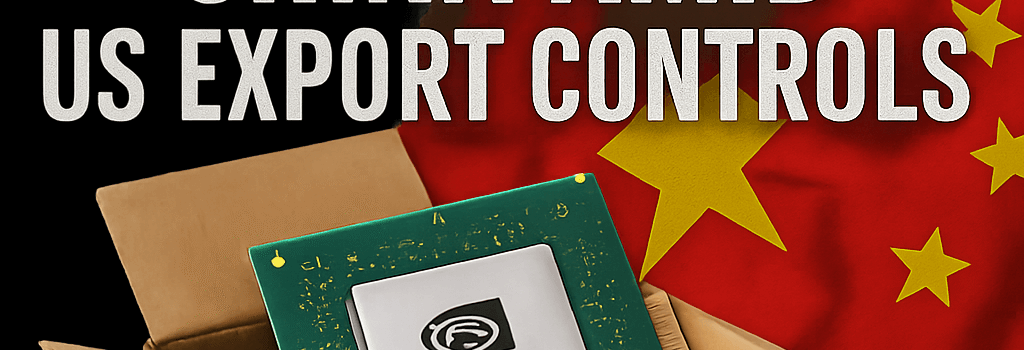Nvidia AI Chips Smuggled into China Amid US Export Controls

In the three months after the Trump administration tightened restrictions on high-end AI processors, at least US $1 billion worth of Nvidia chips quietly made their way into Chinese data centres. This large-scale diversion highlights the limits of export controls in an interconnected global supply chain.
Black Market Resurgence Despite Controls
Following the May 2025 ban on the H20 chip, a burst of activity sprang up across Guangdong, Zhejiang and Anhui provinces. Distributors including a newly registered firm known as Gate of the Era began offering ready-to-deploy racks containing eight B200 units each. Sales contracts and customs filings reviewed by industry analysts indicate total shipments exceeded US $1 billion, with Gate of the Era alone moving roughly US $400 million.
Modus Operandi of Distributors
- Acquisition via third-party assemblers such as Supermicro, Dell and Asus
- Rerouting components through Southeast Asian hubs like Thailand and Malaysia
- Rapid on-site testing and “plug-and-use” demonstrations to assure buyers
- Use of social media platforms (Douyin, Xiaohongshu) for real-time bidding
“What export controls create is inefficiency and huge profits for risk-taking middlemen,” says a Chinese data centre operator familiar with the market.
Technical Specifications and Performance
The Nvidia B200 is powered by an Ampere-derived GPU featuring 7,680 CUDA cores and 96 GB of HBM3 memory delivering up to 2 TB/s bandwidth. It supports mixed-precision FP16/FP32 training with 1.5 petaFLOPS of throughput. By comparison, the compliant H20 offers 3,584 cores and 40 GB HBM2e, capping at 0.8 petaFLOPS.
Key differences:
- B200’s higher on-die tensor core count accelerates large-scale model training
- HBM3 memory yields 40% more bandwidth, critical for sparse transformer workloads
- Enhanced NVLink connectivity enables multi-GPU scaling across racks
Global Supply Chains and Intermediaries
Intermediaries exploit legal loopholes: once hardware lands in China, distribution is legal if import duties are paid. US companies like Supermicro insist they comply fully with export laws and have no visibility into downstream sales. But grey-market brokers consolidate shipments from multiple assemblers, disguise end recipients, and reroute through free-trade zones in ASEAN.
Recent Policy Developments
In July 2025 the Biden administration announced plans to expand export curbs to additional AI chips such as the forthcoming B300 and GB200 series, specifically targeting supply to Chinese intermediaries in Thailand and Malaysia. The European Commission is also reviewing measures to align with US restrictions.
Potential Impact on Chinese AI Research
Despite black market availability, smuggled chips lack official firmware updates, diagnostic tools and vendor support, limiting performance tuning. Leading Chinese AI labs with global partnerships still prefer compliant channels for reliability. However, mid-tier startups in finance and biotech, along with on-list entities barred from legal imports, rely heavily on third-party cloud providers running smuggled hardware.
Additional Analysis: Supply Chain Resilience and Risk
Experts warn that as controls tighten, clandestine networks adapt. Supply chain mapping using blockchain traceability or AI-driven anomaly detection could offer better visibility. Industry veterans suggest an integrated approach:
- Real-time telemetry on GPU serial numbers
- Enhanced end-user certification and post-sales audits
- Collaboration with ASEAN customs for upstream interdiction
Additional Analysis: Geopolitical and Economic Implications
Access to advanced GPUs is a strategic asset in AI-driven national security. US senators are considering sanctions on Chinese firms found trafficking restricted chips. Meanwhile, Chinese policymakers view these processors as vital to maintaining lead in generative AI and smart-city deployments.
Future Outlook and Mitigation Strategies
With the B300 and GB200 scheduled for Q4 2025 release, brokers have begun advertising pre-orders on private chat groups. Economists estimate that sustained arbitrage margins could fund entire smuggling networks for years. To counter this, some recommend leveraging AI-powered export-control monitoring and deeper partnerships between OEMs, customs agencies and cloud providers.
Conclusion
While US export controls have slowed legal sales of high-end Nvidia chips to China, an adaptive black market continues at scale. Only a combination of tighter policy, advanced tracking technology and international cooperation can effectively curb the illicit flow of AI hardware.